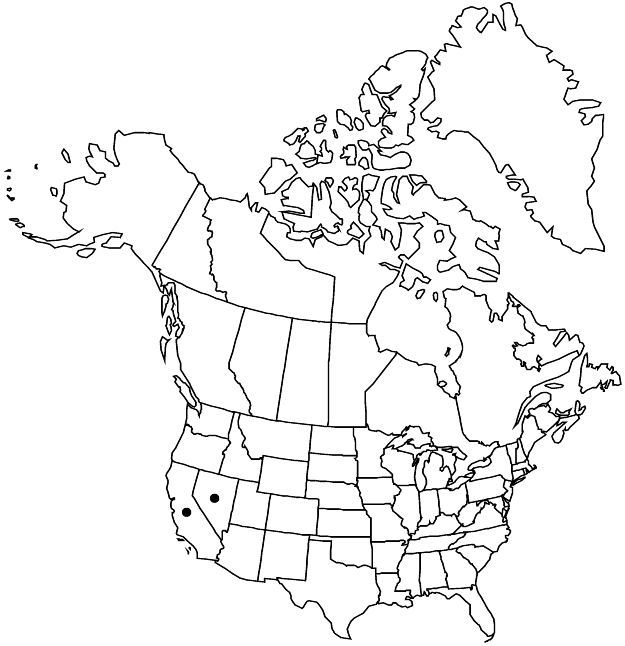Mentzelia inyoensis
Madroño 51: 379, figs. 1, 2. 2004.
Plants biennial, candelabra-form. Stems solitary, erect, straight; branches usually distal, occasionally along entire stem, distal usually longest, antrorse, straight; hairy. Leaves: blade 16.7–89 × 6.3–14.2(–20) mm, widest intersinus distance 3.1–9.7 mm; proximal oblanceolate to elliptic, margins serrate to pinnate, teeth or lobes 10–24, slightly antrorse, 1.4–3.4 mm; distal lanceolate, base usually not clasping, occasionally clasping, margins serrate to pinnate, teeth or lobes 8–14, slightly antrorse, 0.7–7 mm; abaxial surface with complex grappling-hook, and occasionally simple grappling-hook and needlelike, trichomes, adaxial surface with needlelike and occasionally simple grappling-hook trichomes. Bracts: margins usually entire, sometimes toothed. Flowers: petals golden yellow, 11.7–15.8(–18) × 2–4.8 mm, apex acute, glabrous abaxially; stamens golden yellow, 5 outermost not petaloid, filaments linear, not clawed, 10.2–13.2 × 0.6–1.6 mm, with anthers, second whorl with anthers; anthers straight after dehiscence, epidermis smooth; styles 6.7–13 mm. Capsules usually cylindric, rarely cup-shaped, 10.4–25 × 5.5–8.3 mm, base tapering or rounded, not longitudinally ridged. Seeds: coat anticlinal cell walls straight, papillae 3–6 per cell. 2n = 22.
Phenology: Flowering Jun–Aug.
Habitat: Sparsely vegetated, gravelly slopes, gypsum or ash soils.
Elevation: 1400–2000 m.
Discussion
Mentzelia inyoensis is known only from Inyo and Mono counties, California, and Churchill and Esmeralda counties, Nevada.
Selected References
None.
